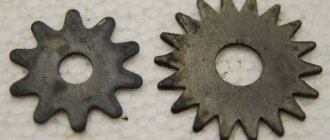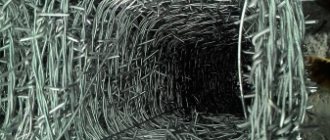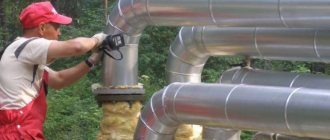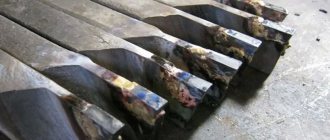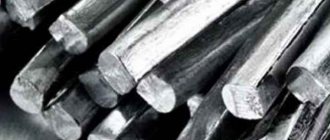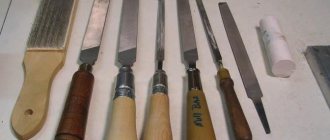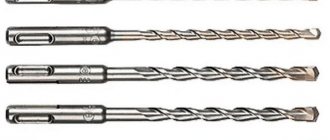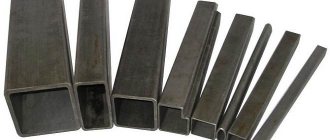Sds plus drills for rotary hammers
Sds plus drills are designed for drilling holes in stone, brick and concrete. SDS plus drills are made of high quality steel with a carbide tip at the end. The shank of the sds plus drills is made according to a standard hammer drill chuck. Sds plus drills are used with hammer drills that have the appropriate chuck.
All sds plus drills with carbide tips must not be cooled with water. Cooling of sds plus drills is carried out only in air.
Technical specifications
Designation
| D diameter, mm | L total length, mm | B working length, mm | weight 1000 pieces, kg | |
| Drill sds plus 4x110 | 4,0 | 110,0 | 50,0 | 32,00 |
| Drill sds plus 5x110 | 5,0 | 110,0 | 50,0 | 36,00 |
| Drill sds plus 5x210 | 5,0 | 210,0 | 150,0 | 48,00 |
| Drill sds plus 6x110 | 6,0 | 110,0 | 50,0 | 38,00 |
| Drill sds plus 6x160 | 6,0 | 160,0 | 100,0 | 45,00 |
| Drill sds plus 6x210 | 6,0 | 210,0 | 150,0 | 54,00 |
| Drill sds plus 6x260 | 6,0 | 260,0 | 200,0 | 62,00 |
| Drill sds plus 6x310 | 6,0 | 310,0 | 250,0 | 70,00 |
| Drill sds plus 8x110 | 8,0 | 110,0 | 50,0 | 44,00 |
| Drill sds plus 8x160 | 8,0 | 160,0 | 100,0 | 56,00 |
| Drill sds plus 8x210 | 8,0 | 210,0 | 150,0 | 70,00 |
| Drill sds plus 8x260 | 8,0 | 260,0 | 200,0 | 80,00 |
| Drill sds plus 8x310 | 8,0 | 310,0 | 250,0 | 93,00 |
| Drill sds plus 8x400 | 8,0 | 400,0 | 340,0 | 124,00 |
| Drill sds plus 10x130 | 10,0 | 130,0 | 70,0 | 61,00 |
| Drill sds plus 10x160 | 10,0 | 160,0 | 100,0 | 72,00 |
| Drill sds plus 10x210 | 10,0 | 210,0 | 150,0 | 93,00 |
| Drill sds plus 10x260 | 10,0 | 260,0 | 200,0 | 108,00 |
| Drill sds plus 10x310 | 10,0 | 310,0 | 250,0 | 130,00 |
| Drill sds plus 10x450 | 10,0 | 450,0 | 390,0 | 205,00 |
| Drill sds plus 10x600 | 10,0 | 600,0 | 540,0 | 260,00 |
| Drill sds plus 12x160 | 12,0 | 160,0 | 100,0 | 92,00 |
| Drill sds plus 12x210 | 12,0 | 210,0 | 150,0 | 116,00 |
| Drill sds plus 12x260 | 12,0 | 260,0 | 200,0 | 137,00 |
| Drill sds plus 12x310 | 12,0 | 310,0 | 250,0 | 170,00 |
| Drill sds plus 12x450 | 12,0 | 450,0 | 390,0 | 248,00 |
| Drill sds plus 12x600 | 12,0 | 600,0 | 540,0 | 330,00 |
| Drill sds plus 13x160 | 13,0 | 160,0 | 100,0 | 94,00 |
| Drill sds plus 14x160 | 14,0 | 160,0 | 100,0 | 114,00 |
| Drill sds plus 14x210 | 14,0 | 210,0 | 150,0 | 116,00 |
| Drill sds plus 14x260 | 14,0 | 260,0 | 200,0 | 94,00 |
| Drill sds plus 14x310 | 14,0 | 310,0 | 250,0 | 210,00 |
| Drill sds plus 14x450 | 14,0 | 450,0 | 390,0 | 283,00 |
| Drill sds plus 15x160 | 15,0 | 160,0 | 100,0 | 130,00 |
| Drill sds plus 15x210 | 15,0 | 210,0 | 150,0 | 170,00 |
| Drill sds plus 15x260 | 15,0 | 260,0 | 200,0 | 210,00 |
| Drill sds plus 15x310 | 15,0 | 310,0 | 250,0 | 255,00 |
| Drill sds plus 15x450 | 15,0 | 450,0 | 390,0 | 374,00 |
| Drill sds plus 15x600 | 15,0 | 600,0 | 540,0 | 474,00 |
| Drill sds plus 16x160 | 16,0 | 160,0 | 100,0 | 133,00 |
| Drill sds plus 16x210 | 16,0 | 210,0 | 150,0 | 173,00 |
| Drill sds plus 16x260 | 16,0 | 260,0 | 200,0 | 215,00 |
| Drill sds plus 16x310 | 16,0 | 310,0 | 250,0 | 260,00 |
| Drill sds plus 16x450 | 16,0 | 450,0 | 390,0 | 380,00 |
| Drill sds plus 16x600 | 16,0 | 600,0 | 540,0 | 479,00 |
| Drill sds plus 16x800 | 16,0 | 800,0 | 740,0 | 640,00 |
| Drill sds plus 17x200 | 17,0 | 200,0 | 140,0 | 162,00 |
| Drill sds plus 18x200 | 18,0 | 200,0 | 140,0 | 200,00 |
| Drill sds plus 18x300 | 18,0 | 300,0 | 240,0 | 300,00 |
| Drill sds plus 18x450 | 18,0 | 450,0 | 390,0 | 440,00 |
| Drill sds plus 18x600 | 18,0 | 600,0 | 540,0 | 620,00 |
| Drill sds plus 18x800 | 18,0 | 800,0 | 740,0 | 824,00 |
| Drill sds plus 19x200 | 19,0 | 200,0 | 140,0 | 205,00 |
| Drill sds plus 20x200 | 20,0 | 200,0 | 140,0 | 255,00 |
| Drill sds plus 20x300 | 20,0 | 300,0 | 240,0 | 365,00 |
| Drill sds plus 20x450 | 20,0 | 450,0 | 390,0 | 520,00 |
| Drill sds plus 20x600 | 20,0 | 600,0 | 540,0 | 690,00 |
| Drill sds plus 20x800 | 20,0 | 800,0 | 740,0 | 920,00 |
| Drill sds plus 22x250 | 22,0 | 250,0 | 190,0 | 320,00 |
| Drill sds plus 22x450 | 22,0 | 450,0 | 390,0 | 630,00 |
| Drill sds plus 22x600 | 22,0 | 600,0 | 540,0 | 840,00 |
| Drill sds plus 22x800 | 22,0 | 800,0 | 740,0 | 1120,00 |
| Drill sds plus 24x250 | 24,0 | 250,0 | 190,0 | 410,00 |
| Drill sds plus 24x450 | 24,0 | 450,0 | 390,0 | 710,00 |
| Drill sds plus 25x250 | 25,0 | 250,0 | 190,0 | 410,00 |
| Drill sds plus 25x450 | 25,0 | 450,0 | 390,0 | 710,00 |
| Drill sds plus 25x600 | 25,0 | 600,0 | 540,0 | 950,00 |
| Drill sds plus 26x250 | 26,0 | 250,0 | 190,0 | 410,00 |
| Drill sds plus 26x450 | 26,0 | 450,0 | 390,0 | 710,00 |
Breakdowns of sds plus drills
| type of breakdown of sds plus drills | cause | warranty services |
| Head part, splitting or crushing (splitting) of a carbide plate, solder residues are visible, the base of the drill is often rounded | Overload, extreme load, force (reinforcement) | Not recognized |
| Head part, chips on the edges of the carbide plate, most of the carbide plate remains firmly soldered | Extreme load when drilling, sds drill hitting reinforcement | Not recognized |
| Head part, splitting or crushing of carbide plate | Overload, extreme load (rebar) | Not recognized |
| Head part, splitting the carbide plate and the drill base, no visible remains of the carbide plate on the drill base | Bore soldering defect | Admitted |
| The head, carbide plates and drill bases are partially detached from the base, no traces of soldering material are visible | Bore soldering defect | Admitted |
| The head part, the carbide plate has a smooth split or fracture mark, no solder residue is visible | Bore soldering defect | Admitted |
| The spiral part and the carbide plate are completely worn out | The drill bit's service life has expired. Further drilling is possible, but it is not effective (stress on the machine) | Not recognized |
| Broken spiral part, the broken area is uneven, not at an angle of 90 relative to the longitudinal axis of the drill | Fracture when exposed to a single load | Not recognized |
| The spiral part is broken, the transition from the spiral to the shank is worn and shiny | The helical part of the drill is clogged with sintered drilling material, drilling outside the helical part, the removal of drilling material during drilling is blocked, failure due to overload | Not recognized |
| Shank fracture, the fracture surface of the drill parts is not smooth, not at a right angle relative to the longitudinal axis of the drill | Overload, extreme load | Not recognized |
| Shank rounding | Drill hammer clamping device is worn out | Not recognized |
| Severe shank groove wear and deformation | Drill hammer clamping device is worn out | Not recognized |
| The drill is fractured at the marking site, the fracture surface of the drill parts is smooth, at a right angle relative to the longitudinal axis of the drill | Stress concentration due to drill marking too deep | Admitted |
Any reproduction, copying, reprinting of materials from the site krepezi.ru is possible only with the written permission of the site owners.
GOST concrete drills sds plus GOST
Home / About Concrete / GOST concrete drills sds plus GOST
A concrete hammer drill is a metal tool that can be successfully used for drilling holes in structures also made of brick, natural and artificial stone. Concrete drills are used in construction and repair work and are classified according to various parameters: design, power of the equipment on which they are installed, type of shank, as well as the geometric parameters of their spiral part.
The right drill can be selected for each specific task
Without drilling holes in various surfaces, construction and repairs are impossible. And if a regular electric drill is quite suitable for making holes in a structure made of wood materials, brick and plasterboard, then only a hammer drill can cope with a concrete structure. The peculiarity of this equipment is that it can not only drill the surface being processed, but also exert an impact load on it, that is, perform the function of a jackhammer. Naturally, to install it on a hammer drill you need to use a special tool - a drill. It differs from a conventional metal drill in a number of parameters.
The drills differ from each other in their design features, among which the following should be highlighted:
- design of the spiral part;
- the presence of a special cavity in the inner part;
- material for manufacturing the working part, which can be a hard alloy;
- number and geometric parameters of cutting edges.
Drills are also distinguished from ordinary drills by the design of the shank, which allows them to be securely fixed in the chuck of the equipment used. The most common types of concrete drill shanks and chucks used when working with rotary hammers are the following.
SDS-plus drills, like cartridges in this category, are designed for installation on medium and light series rotary hammers. It is devices of this type that are most often used by home craftsmen to perform various repair and construction work. The diameter of the SDS-plus shank cannot exceed 18 mm.
Drills with this shank are designed for light construction hammer drills
Intended for concrete processing, drills with shanks of the SDS-max category (the diameter of their fastening part exceeds 18 mm) are used in the configuration of professional series rotary hammers.
The SDS-max system with an increased contact area of the wedges is designed for heavy hammer drills
The main manufacturers of SDS-plus concrete drills (the most popular category) are Chinese companies. As a rule, the parameters of such products comply with the requirements set by GOST, so they can be installed on any rotary hammers. Meanwhile, you should not try to insert a tool for working with concrete into a regular drill, since it will not be possible to do this even with considerable effort.
To choose the right drill for a hammer drill, you should take into account such parameters of the working part as:
- length, the size of which determines how deep the hole you can drill;
- diameter.
Taking into account the fact that hammer drills are used to work with particularly durable materials (concrete, natural and artificial stone), their design has a reinforced design, and the working part is made in the form of a double spiral. This is what allows you to use hammer drills when working with concrete and other materials for a long time, without worrying about their technical condition. Many models of concrete drills for rotary hammers are equipped with a tip made of the strongest alloy of the VK8 brand, which allows them to be successfully used for processing materials of particularly high strength.
Selecting tools of this type is not difficult: all of their most significant parameters are indicated in the labeling. For example, if in front of you is a concrete drill marked 6x160, this means that it has the following dimensions: working diameter - 6 mm, length - 160 mm. It must be borne in mind that the marking of the tool indicates its working length, which is slightly smaller than the dimensions of the working part.
The diameter of the working part of concrete drills installed on a hammer drill can be in the range of 4–30 mm. The most popular sizes fall in the range of 6–10 mm. Using a concrete drill of this size, you can, in particular, make a hole for placing a dowel.
The choice of drill to equip a hammer drill should take into account the strength of the material in which the hole needs to be made. The degree of steepness of the spiral part is also of great importance: the larger it is, the deeper the hole can be drilled at a higher speed. When using a tool with such characteristics, waste material is more efficiently removed from the processing area, which allows you to work very quickly.
How to choose a drill for concrete? It is advisable to rely on the advice of specialists with experience in construction and repair work.
- For drilling shallow holes in concrete, a tool with a flatter spiral is suitable, which is also stronger and more durable.
- It is always better to choose tools from trusted manufacturers, since products from little-known brands are not always of decent quality and may not be suitable for hammer drill cartridges.
Concrete structures are drilled with a perforator, not drilled. The main requirement for a drilling tool is reliability
When purchasing a drill for a hammer drill, you should take into account not only GOST, but also the price category of the tool. On the modern market, you can choose both expensive drills for professional use and cheap disposable ones that do a good job with the tasks. High quality at an affordable price for concrete drills produced under the Bosch, Sturm and Makita brands.
Depending on their purpose, drills for rotary hammers are divided into several categories.
These tools, ideal for drilling holes of considerable depth with a hammer drill, due to their design features, create a minimal amount of dust during operation and do not put a large load on the hammer drill.
Auger drill with carbide inserts
The use of tools of this type allows drilling to be performed at high speed, which significantly increases the productivity of this process. When deciding to choose a drill for a hammer drill of the specified type, you should keep in mind that such a tool creates a significantly greater load on the equipment used than an auger one.
With a slight inclination of the working groove
Tools of this type, provided they are used with light loads, have an increased service life.
These tools are used to create large diameter holes in concrete. This can be either a diamond drill or a drill, the working part of which is equipped with cutting plates made of hard alloy.
Drill bit with carbide cutters
It is recommended to apply lubricant to the shanks of drills installed in a hammer drill, then the tool will last much longer and its use will be more efficient.
Drills installed on a hammer drill for concrete processing are divided into two main types:
- breaking (needed to make large diameter holes in concrete);
- walk-through (they have great power and allow you to make holes even in load-bearing concrete walls of building structures).
Heads of through-and-break drills provide precise punching due to the centering rod and rapid advancement due to chisel-shaped cutters
The main difference between a drill and a conventional drill is the design of the shank, which has a special groove. It is precisely because of the presence of such a groove that the drill cannot be inserted into the chuck of an electric drill. In addition, the distinctive features of the drills include:
- increased rigidity, which makes it possible to successfully drill even very durable materials;
- high productivity, which is achieved due to the fact that drilling is carried out with the simultaneous application of a shock load to the material being processed.
A drill is a tool or consumable
Consumables in construction and repair, what are they?
A drill is a tool, or a consumable.
Consumables are materials that are consumed during repair and construction work, that is, not tools, but materials with a short service life.
These include various building mixtures (+ sand, cement, primers, putties, glue), as well as removable elements of power tools.
For example, cutting and grinding wheels for grinders (angle grinders), drills for rotary hammers, drill bits for electric drills, cutters, blades for various hacksaws, clorons, etc.
As well as cutting discs for saws (for example, circular saws), or files for an electric jigsaw.
Hardware is also consumables (self-tapping screws, nuts, bolts, screws, clamps, nails, various rivets, etc.).
Polyurethane foam, masking tape, sandpaper.
Drills (any kind, for metal, concrete, wood) are also consumables; in the process of performing work, they wear out and break.
From personal experience I can add that the cost of consumables is included in the cost of payment for the work performed.
That is, you need to immediately calculate how many circles you will need (this is for example) for an angle grinder, how many blades for a hacksaw for metal, or files for a jigsaw.
As a rule, all consumables are purchased by the person carrying out repairs or construction work, but the cost is paid by the customer.
Well, or the cost of consumables is immediately included in the estimate, not each individual consumable, but everything as a general line.
Read also: How can you replace a bearing?
Drills are used for impact drilling in concrete, brick and stone using a hammer drill. Drills vary in diameter, length and shank type. The length of the drill can be total - from tip to tip, and working - from the beginning of the spiral to the tip with a carbide plate.
Standard shanks – SDS-Plus and SDS-Max, SDS-Quick. The SDS-Plus and SDS-Max drill mounting system is used for rotary hammers and demolition hammers from BOSCH, AEG, DeWALT, Makita, HITACHI, Hilti, Ryobi, Kress, Skil, Milwaukee and others. There are less common and outdated systems:
- SDS-Top for old BOSCH rotary hammers;
- SDS square 9mm for Asian tools;
- HEX 13mm for Makita, HITACHI;
- HEX 19mm for Makita HK1800, HITACHI HK1810;
- HEX 21mm for Makita, HITACHI, Milwaukee, Kango;
- HEX 17mm for old rotary hammers Makita 8035NB, HR3510, HR3520, HR3850, HM0810, HM0810T, HITACHI;
- Spline (large spline shaft) for AEG, BOSCH, Atlas Copco, Milwaukee, Hilti, HITACHI, Kango, Makita, Metabo.
Each drill is designed for a specific type of drilling (light, medium and heavy) and is suitable for certain hammer drill models. If there is a discrepancy, the drill breaks. There are additional nuances: metal quality, soldering shape, fastening reliability, wear resistance and vibration level. According to extended criteria, drills are chosen by professionals for permanent and long-term work. At home, it is enough to have a set of drills of popular or required sizes of standard quality.
Types of drill spirals
Causes of drill failures - warranty cases
The carbide brazing and the drill body at the brazing point are broken. There are no traces of solder where the carbide brazing was located. The wear of the drill head is insignificant. The reason is a manufacturing defect, poor-quality soldering or a defect in the metal of the head part.
The carbide brazing is completely absent; no traces of brazing on the main part of the drill are visible. The reason is a manufacturing defect, poor-quality soldering.
Read also: Chainsaw chain stops when loaded
The head of the drill is broken precisely under the carbide brazing, which seems to be cut at an angle of 90 degrees to the axis of the drill. The fracture surface is smooth. The reason is a manufacturing defect, a defect in the metal of the head part.
The drill is broken in the spiral area. The fracture surface is smooth, at an angle of 90 degrees to the longitudinal axis of the drill. The reason is a manufacturing defect, a metal defect.
Causes of drill failures – non-warranty cases
The carbide has been ground off or the edges have been rounded. There are significant signs of wear on the drill body. The reason is natural wear and tear.
The carbide solder is destroyed, part of the solder is still securely soldered to the main part of the drill. The drill head is partially rounded or damaged. The reason is getting into reinforcement or concrete.
The drill is broken in the spiral area. The shape of the fracture is uneven and is not located at an angle of 90 degrees to the drill axis. The reason is excessive bending or torsion load.
The drill spiral is clogged with foreign materials: fibers, paint, glue, etc. This causes poor sludge removal and overheating of the consumable. The drill may break and excessive wear on its body may occur. The reason is the use of the drill for other purposes.
Tips for using drills
When using long drills over 460mm, we recommend pre-drilling with a drill 210mm long.
Use special lubricants (gels or aerosols). They provide protection from moisture, have anti-corrosion and conservation properties, and therefore increase the service life of the hammer drill barrel.
Observe the drilling axis. The drill may break if it is skewed.
Select the nozzle specifically for the hammer drill, otherwise you will break the tool.
Basics of choosing pumping stations and five proven models
Because You are not logged in. To come in.
Because The topic is archived.
Childish question. ) Yes, the customer doesn’t give a damn what you include in the estimate - just include it in the price of a square meter, round meter or linear meter and that’s it.
Read also: Cyatim 221 composition and properties
and if you start him separately, he will say dearly. When you order, you will only receive money, everything else must be included in the price in any way - ask, show the calculation, otherwise you cannot guarantee quality.
But the dressing gowns and other work clothes are yours, because the contractor doesn’t care whether he’s wearing shorts, he is not responsible for labor safety, in terms of protecting the contractor’s personnel. Or he simply won’t let you in without a robe. ¶

